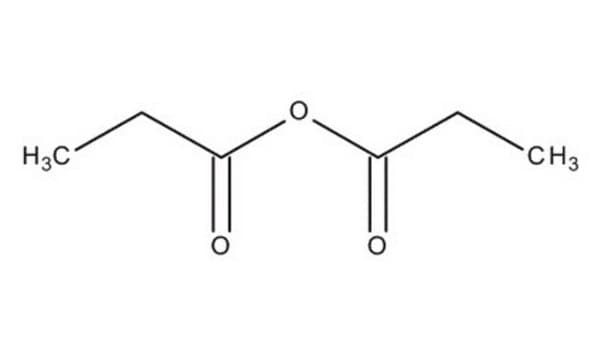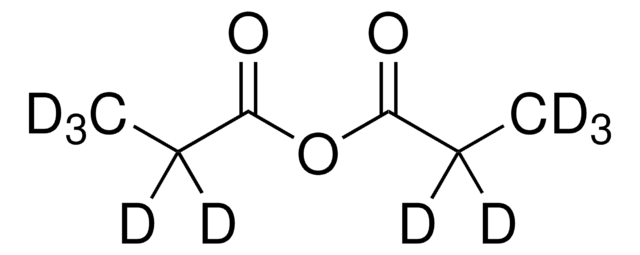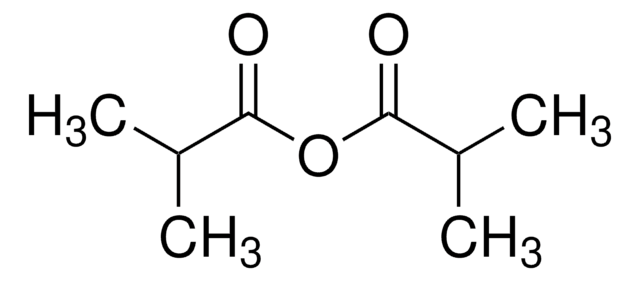240311
Propionic anhydride
≥99%
Synonyme(s) :
Propanoic anhydride
About This Item
Produits recommandés
Densité de vapeur
4.5 (vs air)
Niveau de qualité
Pression de vapeur
10 mmHg ( 57.7 °C)
Essai
≥99%
Forme
liquid
Température d'inflammation spontanée
545 °F
Limite d'explosivité
11.9 %
Indice de réfraction
n20/D 1.404 (lit.)
pb
167 °C (lit.)
Pf
−43 °C (lit.)
Solubilité
chloroform: soluble(lit.)
diethyl ether: soluble(lit.)
ethanol: soluble(lit.)
methanol: soluble(lit.)
Densité
1.015 g/mL at 25 °C (lit.)
Groupe fonctionnel
anhydride
ester
Chaîne SMILES
CCC(=O)OC(=O)CC
InChI
1S/C6H10O3/c1-3-5(7)9-6(8)4-2/h3-4H2,1-2H3
Clé InChI
WYVAMUWZEOHJOQ-UHFFFAOYSA-N
Vous recherchez des produits similaires ? Visite Guide de comparaison des produits
Catégories apparentées
Application
Mention d'avertissement
Danger
Mentions de danger
Classification des risques
Eye Dam. 1 - Skin Corr. 1B
Code de la classe de stockage
8A - Combustible corrosive hazardous materials
Classe de danger pour l'eau (WGK)
WGK 1
Point d'éclair (°F)
165.2 °F - closed cup
Point d'éclair (°C)
74 °C - closed cup
Équipement de protection individuelle
Faceshields, Gloves, Goggles, type ABEK (EN14387) respirator filter
Faites votre choix parmi les versions les plus récentes :
Déjà en possession de ce produit ?
Retrouvez la documentation relative aux produits que vous avez récemment achetés dans la Bibliothèque de documents.
Les clients ont également consulté
Notre équipe de scientifiques dispose d'une expérience dans tous les secteurs de la recherche, notamment en sciences de la vie, science des matériaux, synthèse chimique, chromatographie, analyse et dans de nombreux autres domaines..
Contacter notre Service technique










![(2R)-2-Phenyl-3,4-dihydro-2H-pyrimido[2,1-b][1,3]benzothiazole ≥95%](/deepweb/assets/sigmaaldrich/product/structures/302/833/59a06b8b-9e9d-4dc4-a4ed-a36ab5081792/640/59a06b8b-9e9d-4dc4-a4ed-a36ab5081792.png)
